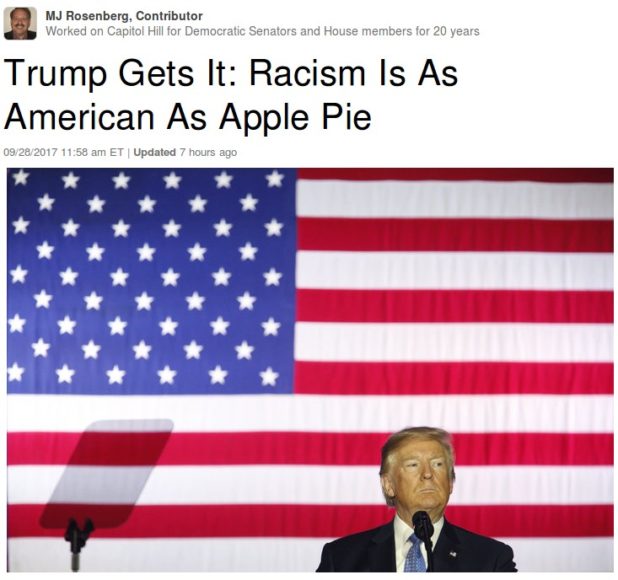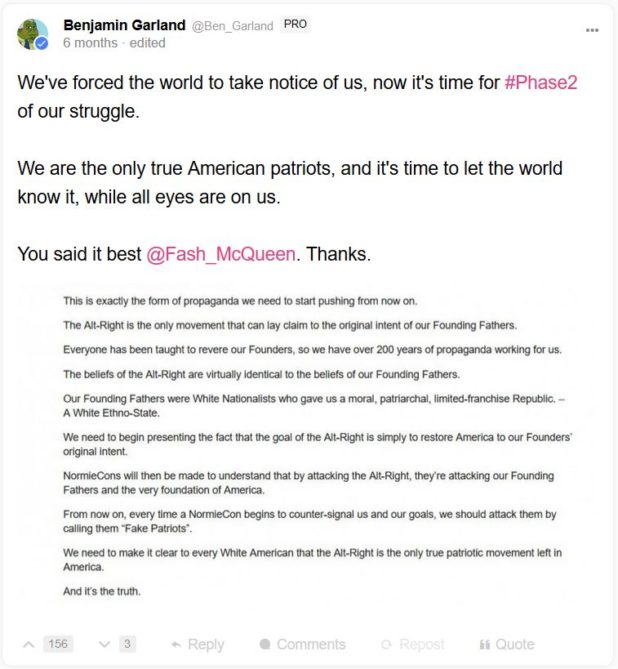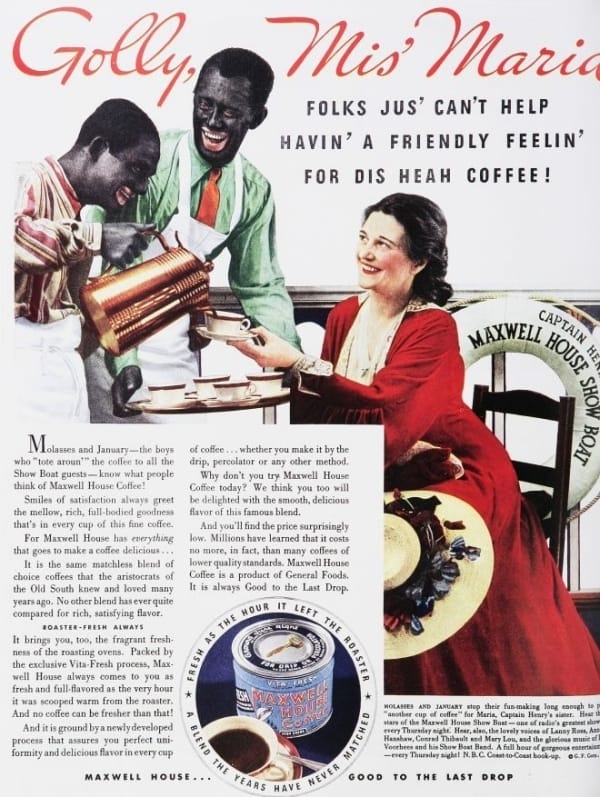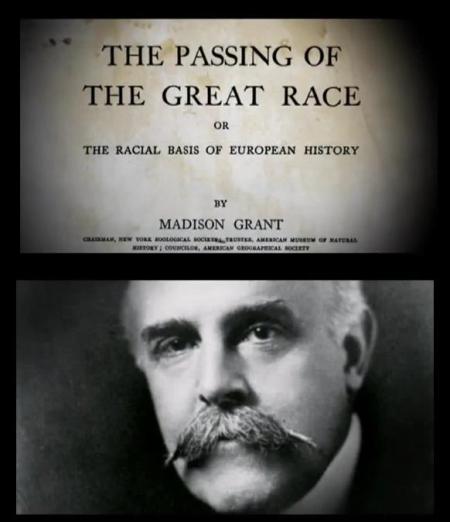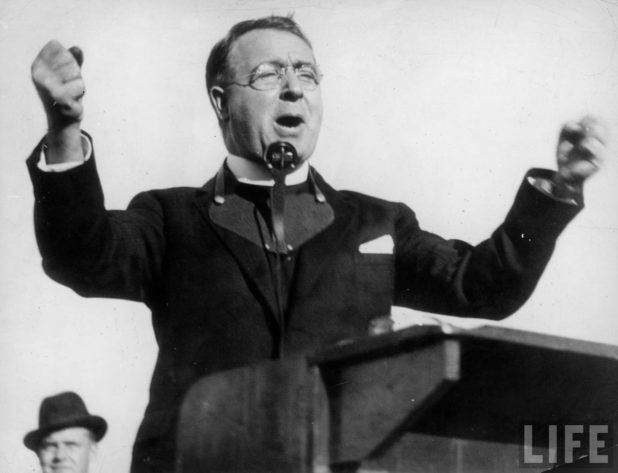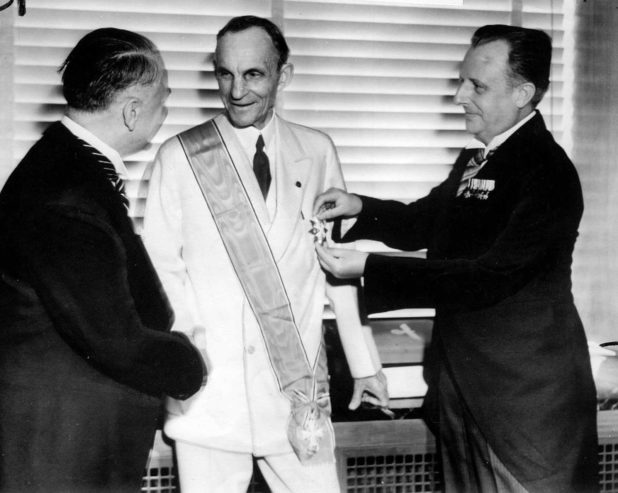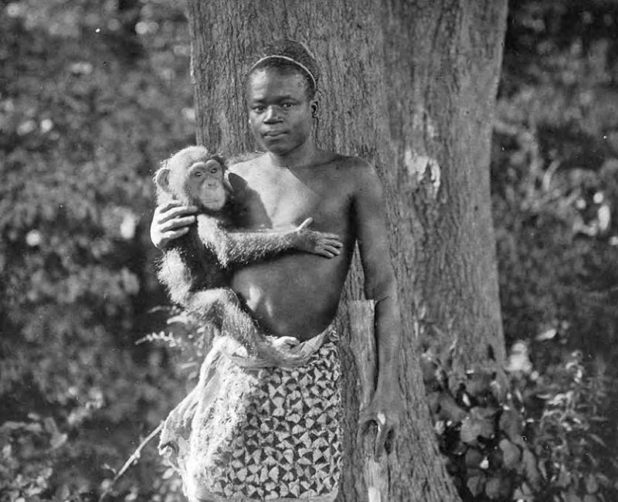Benjamin Garland
Daily Stormer
March 25, 2018
There has been a sustained, nonstop assault on DS ever since we suggested the Alt-Right should present itself more explicitly as American Nationalist – as the only movement who has the true interests of white Americans at heart – by those who are opposed to such a stance.
Everything has seemingly fallen into place for this to be the next logical step: We became famous for a rally that, despite its setbacks, showed us to be the only ones with the courage to stand up against the toppling of our national monuments. At the same time the country has become, and continues to become, increasingly racially polarized.
Black football players take a knee to spite our National Anthem, our President is called a “Nazi” and a “racist” constantly and the Jews and their allies are now overtly attacking America as an inherently white supremacist nation.
The fact that even after 6 months we have been crippled in this strategy not by the left, but by those who are ostensibly on our side, has been quite a shocking thing to behold, to say the least.
If anything, it has brought to the surface the inherent folly of a “big tent” strategy, which may ultimately be a positive in the long term, despite the inescapable growing pains. Better for the fallout to come now rather than later, I suppose.
Many (but not all) critics of the American Nationalist stance seem to think that presenting ourselves as anything less than unironic, hardcore National Socialists is somehow a form of cucking.
It’s true, of course, that ever since WWII any time a white person has advocated for their own interests they have been roundly smeared as a “Nazi,” and that this has been a frighteningly effective way of silencing any and all opposition to the anti-white system.
For this reason, it was necessary to neutralize this tactic of our enemies. The Alt-Right accomplished this, brilliantly, through the use of ironic and semi-ironic Nazism, trolling, and refusing to go on the defensive.
Thanks to the far-reaching and tireless spreading of edgy, educational memes and Alt-Right internet culture in general – which Daily Stormer has played, and will continue to play, a large role in – young white males have been thoroughly desensitized to the stigma attached to the “Nazi” label.
Now that this taboo is broken, and we have forced the world to take notice of us and the “Alt-Right” is a household name, it just makes sense to change tack in order to broaden our outreach – to move into a more serious, but still fun, “phase two,” if you will.
This is quite similar to what the founder of white nationalism himself, George Lincoln Rockwell, had been doing in his time. He used Nazi imagery and shock tactics to make himself irresistible to the media, who otherwise just ignored him. This made him a household name, but was only “phase one” of a clearly laid out four phase plan (which in hindsight was not without its flaws, to be sure).
Shortly before he was assassinated, he moved into “phase two.” This entailed dropping the Nazi uniform, changing the name of his party from the American Nazi Party to the National Socialist’s White People’s Party and using the fame and attention he had acquired to educate the public on the plight of the white race in America.
Dr. William Pierce, who was the editor of Rockwell’s journal, only formally joined the party after the name change. Following Rockwell’s untimely death, Pierce still wanted to move forward with the more serious “phase two” strategy, but the movement instead rapidly reverted back to the “Hollywood Nazi” type approach, causing him to split.
He later said of Matt Koehl, who ended up being Rockwell’s successor:
Koehl was an admirable guy in some ways. For one thing, he was very reliable–but he wasn’t very imaginative. To figure out what to do he would take out Mein Kampf or see how Hitler did it in 1928. I said, ‘Jesus, Matt, we’ve got a different situation now.’
After the split, and shortly before the official founding of the “National Alliance” – by far the most successful American white nationalist organization in history – Pierce wrote the essay “Prospectus for a National Front” (1970), in which he advocated for a more American-tailored approach and advised against “isolating ourselves from the public with programs and images so radical that only a small fraction of one percent will respond.”
He said to his biographer, Robert Griffin, about this change in direction:
I was certain there were many people around who didn’t think of themselves as National Socialists who were concerned about the same degenerative trends in politics and demographics as I was, and I wanted to find them.
By 1967 Rockwell had dropped the Nazi outfit and was wearing a suit.
That many white racialists become enamored with National Socialism is quite understandable. We all get redpilled on the state of the world, we see the Jews ruling over us and how our race is being destroyed, and then it dawns on us that Hitler was openly fighting against it.
What this has resulted in is a thread of thought in the Alt-Right, and the White Nationalist community in general, that Germany was the one country to stand up to the Jews, and that the rest of our people and nations were completely enslaved to them, even back then.
This is a very simplified, and in my view poisonous, view of an extremely complex history. First off, it must be kept in mind that what brought the Nazis to power was a unique set of historical circumstances that just weren’t present in America or elsewhere.
Germany had been defeated in WWI and were humiliated and crushed by the Versailles Treaty, genocidal, Godless communism was at their doorstep and Jewish power and subversion was much further advanced and entrenched there than anywhere else.
America back then was still a traditional, wholesome white society. Degeneracy was outlawed pretty much across the board, Jews were looked down upon and blacks, who were our primary racial problem, were more or less kept in check.
So, while our ideology does indeed parallel that of the Nazis in many ways, it isn’t necessarily more German or National Socialist than it is American.
Non-whites used to be seen as a source of lulz for American whites, not as real people.
Hitler had many great ideas – but not many of them were particularly original. Race and eugenics, for instance, were mainstream, accepted science at that time.
Of the most influential early racial thinkers, really only one was a German: Ernst Haeckel.
The rest were French (de Gobineau), British (Chamberlain, Galton, Darwin) and, most of all, American (Grant, Ripley, Davenport, Stoddard, Goddard, Walker).
Hitler, and the Nazis in general, were heavily influenced by certain American personalities and American racial laws.
Alfred Rosenberg, in his The Myth of the 20th Century – probably the second most influential ideological book of the Third Reich, next to Mein Kampf – wrote this:
The United states of America, according to the universal agreement of all travellers, is the magnificent land of the future. It has the great task of throwing aside all outworn ideas which date from before its foundation. It can proceed with youthful strength to set up the new idea of the racial state, such as some awakened Americans have already apprehended, like Grant and Stoddard.
They saw the necessity for the expulsion and resettlement of the Blacks and the Yellow men, the handing over of east Asiatic possessions to Japan, the working toward a Black colonisation in central Africa, and the resettlement of the Jews to a region where this entire group can find a place.
The Nazi writer Albrecht Wirth, in a 1934 book designed to teach Germans global history through a racial lens, Völkisch World History, wrote the following:
The most important event in the history of the states of the Second Millennium—up until the [First World] War—was the founding of the United States of America. The struggle of the Aryans for world domination received thereby its strongest prop.
A second book of the same nature, The Supremacy of the White Race, written by Wahrhold Drascher in 1936 called America “the [leader] of the white peoples” and said its Founding was “the first fateful turning point” in the struggle for global White Supremacy. “[A] conscious unity of the white race” would have never emerged without it, Drascher contended.
Comments such as these among the Nazis are countless. Hitler himself, though very critical of America at times as well, had much praise for and drew much inspiration from America in regard to his racial views and policies. He writes explicitly of the 1924 Immigration Act in Mein Kampf:
At present there exists one State which manifests at least some modest attempts that show a better appreciation of how things ought to be done in this matter. It is not, however, in our model German Republic but in the U.S.A. that efforts are made to conform at least partly to the counsels of commonsense. By refusing immigrants to enter there if they are in a bad state of health, and by excluding certain races from the right to become naturalized as citizens, they have begun to introduce principles similar to those on which we wish to ground the People’s State.
In his unpublished second book, Hitler commended America for rejecting the Jewish “Melting Pot” idea and shifting immigration policy so that the majority taken in were Northern Europeans, the original founding stock.
The 1924 Immigration Act, also known as the “National Origins Act” or the “Johnson-Reed Act,” was explicitly pro-white – and implicitly anti-Jewish – legislation. It passed in the House by a vote of 308 to 62, and in the Senate 69 to 9.
During the run up to the passing of the bill, Madison Grant, who was the main driving force behind it and the most influential racial author of the time, said to then sitting President, Howard Taft:
vast floods of utterly alien races and types are pouring in, and the great cities are being swamped by the Polish Jews from Eastern Europe. Anyone who scientifically faces the facts can understand the extremely inferior and immoral structure of these latter, and it is universally admitted and deplored in private conversation.
Grant said that the influx of Eastern European Jews was “by far the most serious immigration matter that now confronts us” and that the Act was “the only chance of our life time to shut out the Jews. It is now or never.”
Hitler called Madison Grant’s The Passing of the Great Race his “bible.”
US foreign service officials, according to Jonathan Spiro’s biography of Grant, warned that the Jews were “filthy and ignorant and the majority are verminous”; that they were “abnormally twisted, . . . un-American, and often dangerous in their habits”; and that they were a “thoroughly undesirable” class of immigrant and unquestionably “unassimilable.”
Burton J. Hendrick publicly admitted in 1923 that the Emergency Quota Act of 1921 was “chiefly intended—it is just as well to be frank about the matter—to restrict the entrance of Jews from eastern Europe.”
Albert Johnson, one of two main architects of the Act, brought State Department cables before the Senate Immigration Committee which warned that the Jews preparing to sail to America were “evasive, dishonest, and . . . do not have the moral qualifications for American citizenship.”
Spiro continues:
Johnson read aloud to the House fresh consular cables provided by the State Department, warning that the majority of European Jews embarking for the United States were “subnormal,” “twisted,” “deteriorated,” and full of “perverted ideas. . . . These are not those who hewed the forests, . . . conquered the wastes, and built America. These are beaten folk” who, “besides being as a class economic parasites, . . . are impregnated with Bolshevism.”
In short, according to the U.S. State Department, “this type of immigrant is not desirable from any point of view at this time.”
The 1924 Immigration quotas held even as Jews were being increasingly persecuted under Hitler. In 1939, even following Kristallnacht, only 8% of Americans polled said they wanted to accept more Jewish refugees. That same year, the final attempt to increase the quota – the Wagner-Rogers bill, which called for refuge for Jewish children specifically – was soundly defeated.
“One year later,” writes Spiro, “a similar bill to admit British children was introduced into the U.S. Congress. It was quickly approved.”
In fact, no Western nation would accept an increase in Jews. In 1938, representatives from 32 countries organized the Évian Conference to decide what to do about the ones then living under Nazi rule. The one Jewish representative who was invited to the conference, Golda Meir, wasn’t even allowed to speak. The only two countries in attendance that were willing to take in Jewish refugees were non-white – the Dominican Republic and Costa Rica.
Jews who were liberated from concentration camps following the war, far from being given refuge en masse, were instead put into displaced persons camps, where they had to stay for indefinite periods of time until they could be repatriated to their countries of origin. As many Jews feared persecution in those countries, they were forced to continue their underground network to Palestine (which was illegal at the time, as the British had barred their further immigration).
This shows us that, aside from a few treacherous elites such as FDR, Americans (and other Europeans) had no special love for the Jews. Most Americans, having little to no contact with Jews, were probably indifferent to them at best.
Blacks, who whites had much more experience with, were at the time of WWII still almost universally seen as inferior and as a mortal danger to whites.
There was no official legislation targeting the Jews by name in America, but they were effectively shut out of higher institutions by quotas and other regulations specifically designed to limit their numbers, just as the Immigration Act was.
For example, the dean of Harvard law school, Roscoe Pound (1916-1936), who is one of the most cited legal scholars in American history, was an open admirer of Hitler, saying he “was a man who can bring [Austria and Germany] freedom from agitating `movements.’”
Lawrence Lowell, who was president of Harvard until 1933, also admired the Nazis – sending representatives to Nazi Universities even as their ongoing persecution of the Jews was well-known – and worked feverishly to limit Jewish and black enrollment at Harvard. He also led the Secret Court of 1920, which purged the institution of homosexuals.
The most popular radio personality during the 30s was Father Charles Coughlin, whose broadcasts were openly anti-Semitic. At its peak his show had a listenership of up to 40 million (out of a population of roughly 120-130 million).
Father Charles Coughlin
Hitler’s private train, which took him to his “Eagle’s Nest” retreat, was code named Amerika, because he so much admired US industrial strength and transportation ability.
He especially admired the great American industrialist Henry Ford, who was also a highly vocal and influential anti-Semite. Hitler praised Ford by name in Mein Kampf, had a life sized portrait of him next to his desk, and modeled the Volkswagon on the Model T.
“You can tell Herr Ford that I am a great admirer of his,” Hitler told Prince Louis Ferdinand as he departed for the United States. “I shall do my best to put his theories into practice in Germany.”
In 1937, on Ford’s 75th birthday, Hitler awarded him the Grand Cross of the German Eagle – the highest honor that could be given to a foreigner.
Ford spent millions of his own money to wake the world to the Jewish menace, printing a total of 91 anti-Semitic articles in his Dearborn Independent, which he gave out free to every customer.
Henry Ford receiving the Grand Cross
Even Baldur Von Schirach, head of the Hitler Youth, was redpilled on the JQ by the Dearborn Independent articles when he was 17.
They influenced Hitler’s view on the Jews as well, and are quoted in Mein Kampf. Theodor Fritsch, Germany’s leading anti-Jewish publisher, translated and distributed them widely in Germany.
A core tenet of Hitler’s ideology was German expansionism: lebensraum. He was openly inspired in this endeavor by the conquest of America – “Manifest Destiny” – and the British Empire. He considered Americans as well as the British as cousins to the Germans, as being cut from the same superior racial stock, and thus deserving of world mastery.
Germany, in his eyes, belonged at the apex alongside these two Nordic superpowers, as it was prior to WWI. He was playing catch up, not blazing any trails.
"In 1928, Hitler praised the Americans for having 'gunned down the millions of Redskins to a few hundred thousand'"
— Adrienne Keene (@NativeApprops) August 16, 2017
The infamous 1934 “Nuremberg Laws” were heavily influenced by – and wouldn’t have come into existence without – America’s “anti-miscegenation” laws, which banned marriage between a white and a non-white in 30 states.
Virginia – the land of Jefferson – was home to the infamous Racial Integrity Act of 1924. This Act designated people as non-white by the “one-drop rule,” This was significantly more hardcore than the Nuremberg Laws – “too racist” for the Nazis to copy.
These laws were lobbied for, and inspired by, the fiercely patriotic Madison Grant, whose lifetime achievements are absolutely breathtaking. He counted multiple U.S. Presidents as his friends including fellow white racialist Teddy Roosevelt (1901-1909) and Herbert Hoover (1929-1933).
Aside from popularizing race science and getting an impressive amount of pro-white legislation passed, Grant also led the way in creating the conservationist movement. The American bison, and dozens of other animals, would be extinct today if it weren’t for Grant.
In 1899, he founded the Bronx Zoo, which was four times larger than any other existing Zoo in the world and the first to attempt to recreate the animals’ natural habitats.
An African Pygmy, Ota Benga, was displayed in the Zoo as a semi-human evolutionary curiosity.
Ota Benga
Now I have to ask: How does using an African as a zoo exhibit jive with the assertion, made by many who are ostensibly on our side, that America was destined to be cucked or is the inevitable outcome of the phrase “all men are created equal”?
It doesn’t. Our biggest problem – our true fatal mistake – according to the bulk of the Alt-Right, has not been a handful of later-misinterpreted Enlightenment-inspired platitudes, but that we allowed Jews in our midst and then failed to deal with them properly.
After giving much thought as to why the above described period of our history is generally blacked out or glossed over, even while liberals love to beat us over the head with our “racist legacy,” I’ve concluded that it is because America has become such an engine of progressivism they prefer it to seem as though our history has been an uninterrupted, if slow-going, move toward egalitarianism, and these facts shatter that myth.
Therefore, those on the right who cherry pick quotes by the Founding Fathers to craft a narrative of American history being essentially a straight line to the left, from the signing of the Declaration of Independence to today, are in that regard undeniably marching in lockstep with the anti-American liberal left.
These points will be addressed further in the part 2 of this article.



